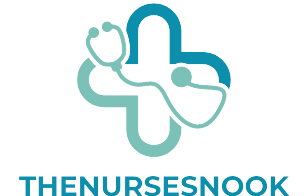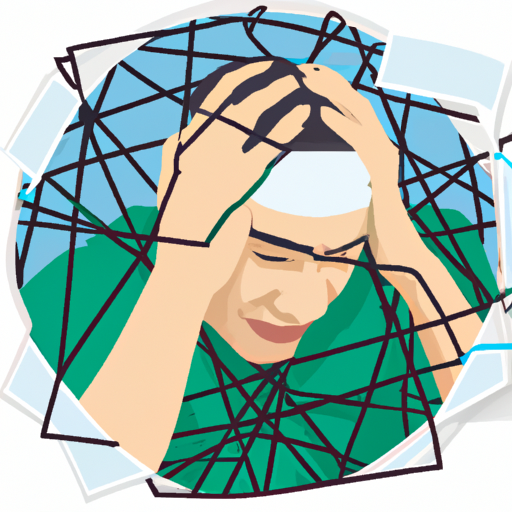Headaches are a common ailment that many of us have experienced at some point in our lives. Whether it’s a dull ache or a pounding sensation, headaches can be disruptive and debilitating. Understanding the diagnosis, symptoms, and causes of headaches is essential in finding effective treatments and long-term relief. In this article, we will delve into the intricacies of headaches, exploring the various types and their unique characteristics. We will also discuss the most common symptoms and causes, shedding light on the underlying factors that contribute to these painful episodes. Furthermore, we will explore the wide range of treatment options available, from over-the-counter medications to alternative therapies. Lastly, we will delve into the importance of prevention, identifying lifestyle changes and strategies that can significantly reduce the frequency and severity of headaches. So, if you’re tired of being sidelined by the throbbing pain in your head, read on to unravel the mysteries of headaches and find the relief you’ve been longing for.
1. "Understanding Headaches: Unraveling the Diagnosis, Symptoms, and Causes"
Headaches are a common ailment that can range from mildly irritating to severely debilitating. Understanding the different types of headaches, their diagnosis, symptoms, and causes is crucial for effective treatment and management. By unraveling the complexities of headaches, individuals can gain a deeper understanding of their condition and seek appropriate medical attention.
Diagnosing a headache requires careful evaluation of the patient’s medical history, physical examination, and sometimes additional tests. Physicians often rely on the description of symptoms provided by the patient to determine the type of headache. There are several types, including tension headaches, migraines, cluster headaches, and sinus headaches. Each type has distinct characteristics and may require specific treatments.
Symptoms of headaches vary depending on the type and severity. Tension headaches, the most common type, typically cause a dull, aching pain on both sides of the head. Migraines, on the other hand, are characterized by intense throbbing or pulsating pain, often accompanied by nausea, vomiting, and sensitivity to light and sound. Cluster headaches are excruciatingly painful headaches that occur in clusters or patterns, usually around one eye. Sinus headaches, often caused by sinusitis, result in pressure and pain in the forehead, cheeks, and bridge of the nose.
The causes of headaches can be multifactorial and may vary depending on the type. Tension headaches are often triggered by stress, anxiety, poor posture, or muscle tension in the neck and shoulders. Migraines, on the other hand, involve abnormal brain activity and are thought to be influenced by genetic factors, hormonal changes, certain foods or drinks, weather changes, and other environmental factors. Cluster headaches are believed to result from abnormalities in the hypothalamus, while sinus headaches are caused by inflammation and congestion in the sinuses.
Effective treatment for headaches depends on an accurate diagnosis. Over-the-counter pain relievers, such as acetaminophen or ibuprofen, can provide temporary relief for mild to moderate headaches. However, for more severe or chronic headaches, prescription medications may be necessary. Triptans are commonly prescribed for migraines, while preventive medications are often used for cluster headaches. Lifestyle modifications, such as stress management techniques, regular exercise, and adequate sleep, can also help alleviate headache symptoms.
In conclusion, headaches can significantly impact an individual’s quality of life. Understanding the diagnosis, symptoms, and causes of headaches is essential for effective treatment and management. Seeking medical attention, maintaining a healthy lifestyle, and adhering to prescribed treatments are key steps in minimizing the impact of headaches on daily life. By unraveling the complexities of headaches, individuals can take control of their condition and work
2. "Finding Relief: Effective Treatments for Headaches"
Headaches are a common ailment that affects millions of people worldwide. They can be incredibly disruptive to our daily lives, making it difficult to concentrate, work, or even carry out simple tasks. Luckily, there are several effective treatments available to relieve the agony of headaches and help individuals regain control over their lives.
One of the most commonly used treatments for headaches is over-the-counter pain medication. Nonsteroidal anti-inflammatory drugs (NSAIDs) such as ibuprofen or aspirin can help alleviate the pain associated with headaches. These medications work by reducing inflammation that may be causing the headache, as well as blocking the production of certain chemicals in the body that contribute to pain. However, it is important to follow the recommended dosage and not exceed the maximum daily limit, as overuse of these medications can lead to rebound headaches or other adverse effects.
For individuals who experience more severe or frequent headaches, prescription medications may be necessary. Triptans are a class of drugs commonly prescribed for migraines, which work by constricting blood vessels in the brain and blocking pain pathways. These medications can effectively relieve the pain associated with migraines and reduce other symptoms such as nausea or sensitivity to light and sound. However, it is crucial to consult with a healthcare professional to determine the appropriate medication and dosage, as some individuals may experience side effects or have contraindications to certain medications.
In addition to medication, there are several non-pharmacological treatments that can provide relief for headaches. One popular option is relaxation techniques, such as deep breathing exercises, meditation, or yoga. These techniques help reduce stress and tension, which are common triggers for headaches. Physical therapy or chiropractic manipulation can also be beneficial, especially for tension headaches or headaches caused by musculoskeletal issues. These treatments focus on relieving muscle tension and improving posture, which can alleviate headache symptoms.
Another alternative treatment for headaches is acupuncture. This ancient Chinese practice involves inserting thin needles into specific points on the body to restore the flow of energy and promote healing. While the exact mechanisms behind acupuncture’s effectiveness are not fully understood, many individuals report significant relief from headaches after undergoing acupuncture sessions. However, it is important to seek out a qualified and licensed acupuncturist to ensure safety and effectiveness.
Preventive measures can also play a crucial role in managing headaches. Identifying and avoiding triggers such as certain foods, alcohol, or environmental factors can help prevent headaches from occurring. Maintaining a regular sleep schedule, exercising regularly, and managing stress through techniques like mindfulness or therapy can also significantly reduce the frequency and intensity of headaches.
In conclusion, finding relief from headaches involves a combination of approaches. Over
3. "Preventing Headaches: Lifestyle Changes and Strategies for Long-Term Relief"
Headaches can be debilitating and have a significant impact on a person’s daily life. While seeking appropriate medical treatment is crucial, there are also lifestyle changes and strategies that can help prevent headaches and provide long-term relief. By incorporating these changes into your daily routine, you can take control of your headaches and improve your overall quality of life.
1. Maintain a Regular Sleep Schedule:
Irregular sleep patterns can trigger headaches in many individuals. It is essential to establish a consistent sleep routine by going to bed and waking up at the same time every day, even on weekends. Additionally, ensure that your sleep environment is comfortable and conducive to quality rest. Avoiding excessive caffeine intake and electronic devices before bedtime can also contribute to better sleep and reduce the risk of headaches.
2. Manage Stress:
Stress is a common trigger for headaches. Finding effective ways to manage stress can significantly reduce the frequency and intensity of headaches. Engaging in activities such as meditation, deep breathing exercises, yoga, or regular physical exercise can help alleviate stress and promote relaxation. It is important to identify the stressors in your life and develop healthy coping mechanisms to minimize their impact on your well-being.
3. Stay Hydrated:
Dehydration can lead to headaches, so it is crucial to maintain proper hydration throughout the day. Aim to drink at least 8 glasses of water daily and increase your intake during hot weather or physical activity. Avoid excessive consumption of alcohol and limit the intake of caffeinated beverages, as they can contribute to dehydration and trigger headaches.
4. Practice Healthy Eating Habits:
Diet plays a significant role in preventing headaches. It is important to establish regular meal patterns and avoid skipping meals, as low blood sugar levels can trigger headaches. Incorporate a balanced diet rich in fruits, vegetables, whole grains, and lean proteins. Certain foods and additives, such as processed meats, aged cheese, chocolate, and artificial sweeteners, may act as triggers for some individuals. Identifying and avoiding these triggers can help prevent headaches.
5. Maintain Good Posture:
Poor posture, especially while sitting for extended periods, can strain the muscles in the neck and shoulders, leading to tension headaches. It is important to maintain proper ergonomics while working or engaging in activities that require prolonged sitting. Use a supportive chair, adjust your computer monitor to eye level, and take frequent breaks to stretch and move around.
6. Exercise Regularly:
Regular physical exercise not only improves overall health but can also help prevent headaches. Engaging in aerobic exercises, such as walking, jogging, swimming, or cycling, promotes blood circulation and releases endorphins, which act as natural painkillers. Aim



